This Orange Passover Sponge Cake recipe is one of those rare Passover desserts that I’d eat any time of year. Citrusy, bright, and flour-free, it is also the perfect dessert for your Seder table.
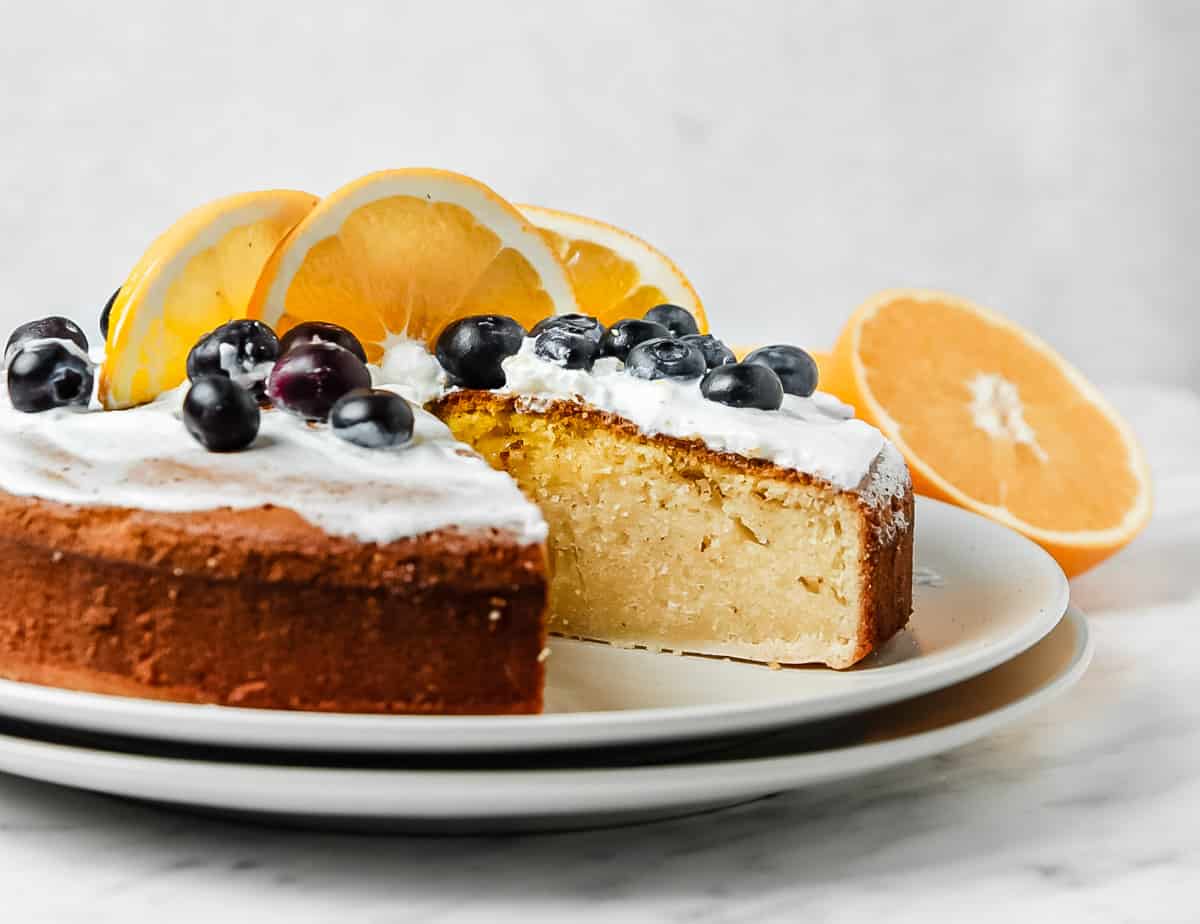
This post may contain affiliate links. As an Amazon Associate, I earn from qualifying purchases. See my Affiliate Disclosure.
This easy kosher for Passover sponge cake recipe is light, airy, and flavorful. It contains just a few basic ingredients, and it is even gluten free!
The classic Passover sponge cake is sadly missunderstood. Sure it can be flabby and uninteresting. But a well-made sponge cake is delicious, delicate, fluffy, and moist all at the same time.
Almond flour and potato starch make a sturdy but still tender base. A splash of orange juice brightens up the flavor. I love to top this Passover sponge cake with strawberries, blueberries, or other fresh fruit and a sprinkling of confectioners’ sugar or whipped cream.
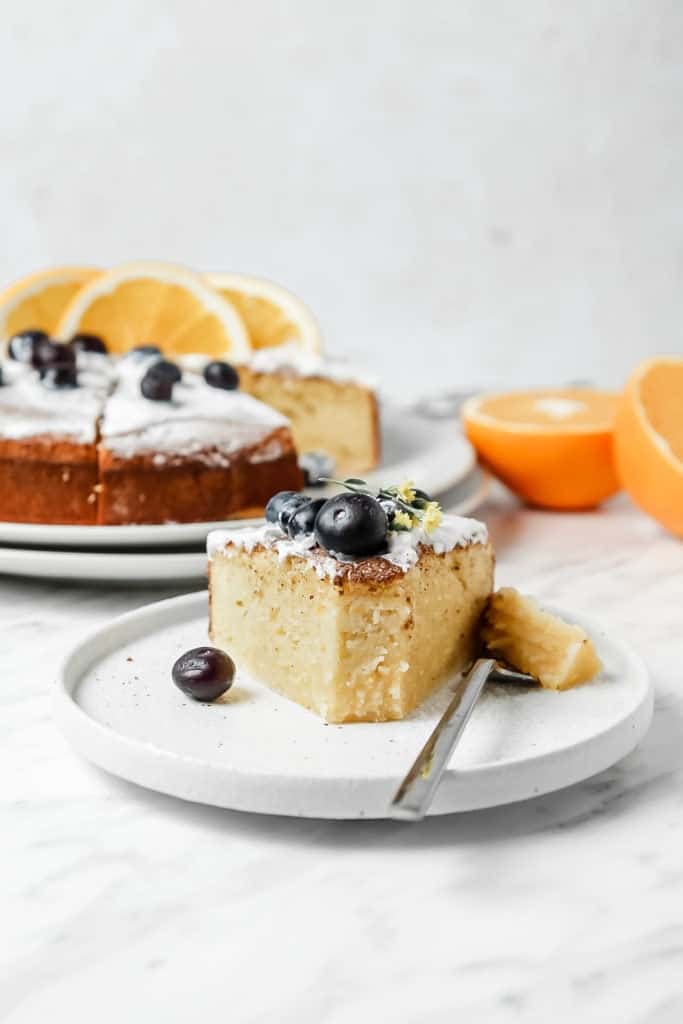
What is the difference between sponge cake and normal cake?
A “normal” cake is contains butter, sugar, eggs, flour, and a leavening agent like baking powder or baking soda.
A sponge cake is contains oil, sugar, flour (or, as in this case, a starch like potato starch), whipped eggs, and sometimes a chemical leavening ingredient, as well.
I use kosher-for-Passover baking powder in my sponge cake. You might wonder how baking powder, a leavening agent, can be kosher for Passover. As with everything, there are differing opinions on this, but foods that are leavened by fermentation (yeast) are chametz. Baking powder is a chemical leavening agent and is therefore not prohibited. Think about it: You can use whipped egg whites as a leavener, too. I use Gefen baking powder, which is cornstarch-free (unlike some other brands that use cornstarch as a carrier) and kosher for Passover.
The whipped eggs keep the cake moist and provide structure. The end result is a sponge-like texture.
For the complete list of ingredients with quantities and detailed prep and cooking instructions, please see the recipe card that appears at the end of this post.
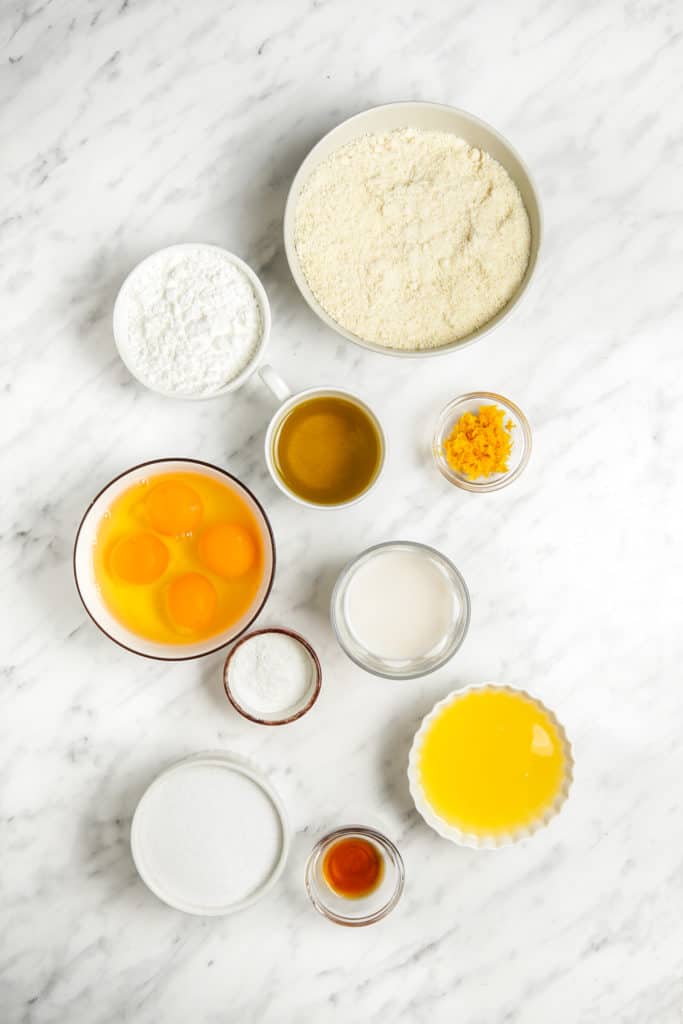
What ingredients do you need to make this Passover orange cake?
The ingredients for this basic sponge cake are quite simple. Here is everything you need:
- Sugar
- Eggs
- Milk
- Orange juice and zest
- Oil
- Potato starch
- Almond flour
- Baking powder (use Gefen cornstarch-free baking powder for Passover)
- Salt
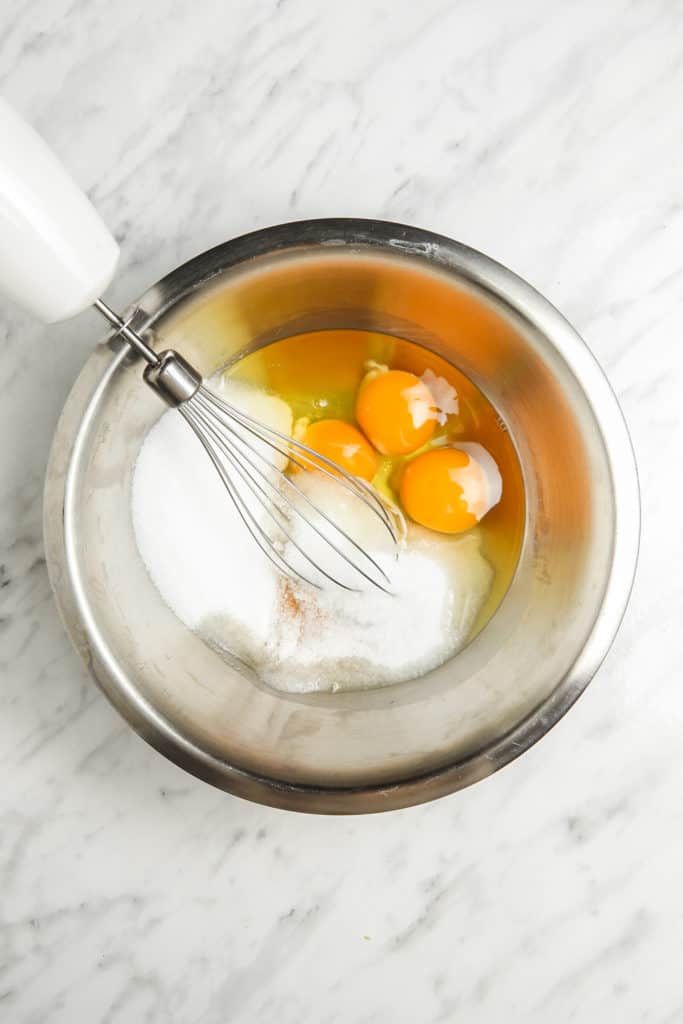
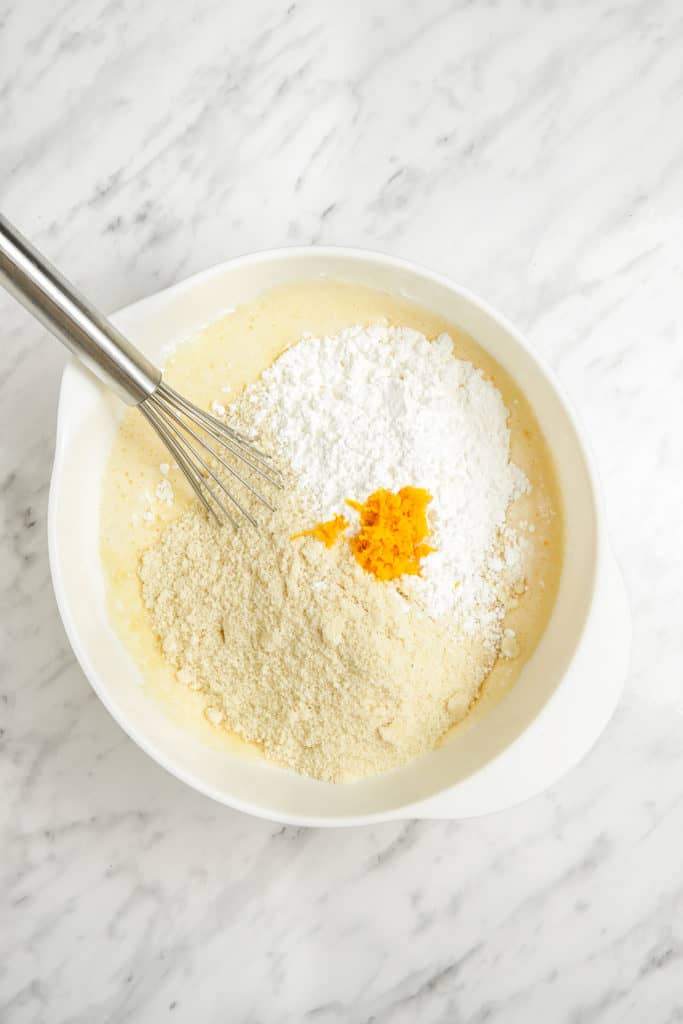


How do you make it?
Making this basic sponge cake is simple. Here are the key steps:
- Preheat the oven and grease the pan.
- Mix the eggs with sugar, milk, orange juice, andoil, potato starch, almond flour, baking powder, and salt.
- Transfer the batter to the prepared cake pan and bake.
What makes this a kosher for Passover sponge cake?
Just about any basic sponge cake is free of wheat flour. I make this particular Passover sponge cake with potato starch and almond flour. Both almonds and potato starch are generally widely accepted as “kosher for Passover.”
I like to use Gefen potato starch.
I love the almond flour from Bob’s Red Mill.
Is there a substitute for potato starch?
If you are making this for Passover and plan to share it with others, you’ll obviously want to stick to ingredients that are kosher for Passover. Potato starch is always safe in this regard. But it’s not the only starch that will work in this cake.
Tapioca starch is another option that will work with the recipe. Many people consider tapioca flour or tapioca starch to be kosher for Passover, but you won’t likely find any with a “kosher for Passover” label.
Cornstarch is a suitable substitute for potato starch, but corn is more controversial since many Jews do not consider corn kosher for Passover. If you’re not making this cake for Passover, however, cornstarch will work just fine as a substitute.

More Jewish holiday recipes you’ll love
For Passover, I love to make Lemon Coconut Macaroons and Flourless Chocolate Cookies in addition to this sponge cake.
For Rosh Hashanah, everyone begs for this incredible Honey Cake. Honey Cookies and this beautiful round Orange Chocolate Babka are also popular!
For Purim, you can’t beat these beautiful Hamentashen. And on Hanukkah, I make multiple batches of Chocolate Rugelach and Sufganiyot.

Orange Sponge Cake
Ingredients
- Oil for preparing the pan
- ¾ cup granulated sugar
- 4 large eggs
- ½ cup milk
- ½ cup orange juice
- 1/3 cup oil use any neutral-flavored oil
- 2 cups potato starch see note for substitutions
- 1 cup almond flour
- 2 teaspoons baking powder
- ½ teaspoon kosher salt
- 1 heaping tablespoon orange zest
Instructions
- Preheat the oven to 350ºF. Spray or brush the inside of a 9-inch round baking pan with oil.
- In a medium mixing bowl, combine the sugar and eggs. Beat on medium-high speed until the mixture is foamy and well combined. While mixing on medium-low speed, gradually add the milk, orange juice, and oil, mixing until they are all incorporated.
- Whisk the almond flour, potato starch, baking powder, salt, and orange zest into the wet ingredients and mix well.
- Transfer the batter to the prepared pan.
- Bake for about 45 minutes, until a toothpick inserted into
the center comes out clean.



Why not use all OJ instead of milk and OJ to keep it pareve?
Hi Martha, That is a great idea! I will suggest that as an alternative. Thank you!
MADE THIS YESTERDAY FOLLOWED IT AS YOU WROTE EXCEPT WE USE ALMOND MILK AND I USED A REAL ORANGE AND SQUEEZED IT–AND IT LOOKS LIKE A BOG COOKIE–GOOD BUT DIDNT GROW—
Have you tested this recipe without the milk? I want to make but not if it’s untested. If so, do you increase the oj by 1/2 cup?
I’m sorry, but I have not made it without milk.
Hello –
I am excited to bake this orange sponge cake for my seder.
Questions: What is the icing shown in your photos? Or is it confection sugar?
Is the cake very dense and if so would it benefit from more eggs?
Thank you in advance,
Barbara
The topping in the photos is just whipped cream.